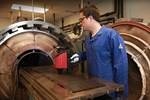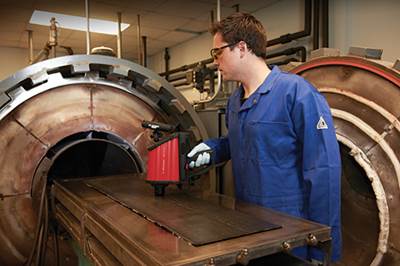MIT researchers reveal how bonded joints fracture and fail
Moisture reportedly plays crucial role.
Materials that are bonded together with epoxy and other adhesives are used everywhere in modern life — from crowns on teeth to modern composites used in construction. Yet it has been very difficult to study how these bonds actually fracture and fail, and thus, how to make them more failure-resistant.
Researchers at MIT (Cambridge, Mass.) have developed a way to study bonding failures directly, revealing the crucial role that moisture plays. Their findings are published in the journal Proceedings of the National Academy of Science in a paper by MIT professors of civil and environmental engineering Oral Buyukozturk and Markus Buehler; research associate Kurt Broderick of MIT’s Microsystems Technology Laboratories; and doctoral student Denvid Lau.
“The bonding problem is . . . encountered in many disciplines, especially in medicine and dentistry,” says Buyukozturk, whose research has focused on infrastructure, where such problems are also of great importance. “The interface between a base material and epoxy, for example, really controls the properties. If the interface is weak, you lose the entire system.”
Besides dental implants and joint replacements, such bonding is also critical in construction materials such as fiber-reinforced polymers and reinforced concrete. But while such materials are widespread, understanding how they fail is not simple.
There are standard test methods for evaluating the strength of materials and how they may fail structurally, but bonded surfaces are more difficult to model. “When we are concerned with deterioration of this interface when it is degraded by moisture, classical methods can’t handle that,” Buyukozturk says. “The way to approach it is to look at the molecular level.”
Buyukozturk explains that when such systems are exposed to moisture, “it initiates new molecules at the interface and that interferes with the bonding mechanism. How do you assess how weak the interface becomes when it is affected? We came up with an innovative method to assess the interface weakening as a result of exposure to environmental effects.”
The team used a combination of molecular simulations and laboratory tests in its assessment. The computer modeling was based on fundamental principles of molecular interactions, not on empirical data, Buyukozturk says. In the laboratory tests, Buyukozturk and his colleagues controlled the residual stresses in a metal layer that was bonded and then forcibly removed. “We validated the method, and showed that moisture has a degrading effect,” he says.
MIT believes the findings could lead to exploration of new ways to prevent moisture from reaching into the bonded layer, perhaps using better sealants. “I think this is going to be an important step toward assessment of the bonding, and enable us to design more durable composites,” Buyukozturk says. “It gives a quantitative knowledge of the interface” — for example, predicting that under specific conditions, a given bonded material will lose 30 percent of its strength.”
Interface problems are universal, Buyukozturk says, occurring in many areas besides biomedicine and construction. “They occur in mechanical devices, in aircraft, electrical equipment, in the packaging of electronic components,” he says. “We feel this will have very broad applications.”
Bonded composite materials are beginning to be widely used in airplane manufacturing; often these composites are then bonded to traditional materials, like aluminum. Others in the field have hailed this approach — which combines theory, experiments, and simulations at the nanoscale level — as outstanding research that will help overcome shortcomings in understanding failure at the bonded interface of dissimilar materials. These experts note these interfaces are ubiquitous in composites, thin films, and many other systems.
Related Content
Infinite Composites: Type V tanks for space, hydrogen, automotive and more
After a decade of proving its linerless, weight-saving composite tanks with NASA and more than 30 aerospace companies, this CryoSphere pioneer is scaling for growth in commercial space and sustainable transportation on Earth.
Read MoreIndustrializing additive manufacturing in the defense/aerospace sector
GA-ASI demonstrates a path forward for the use of additive technologies for composite tooling, flight-qualified parts.
Read MoreThe next-generation single-aisle: Implications for the composites industry
While the world continues to wait for new single-aisle program announcements from Airbus and Boeing, it’s clear composites will play a role in their fabrication. But in what ways, and what capacity?
Read MorePlant tour: Aernnova Composites, Toledo and Illescas, Spain
RTM and ATL/AFP high-rate production sites feature this composites and engineering leader’s continued push for excellence and innovation for future airframes.
Read MoreRead Next
Certification of bonded composite primary structures
OEMs develop technology to quantify uncertainty in pursuit of the no-bolt bondline.
Read MoreUltrasonic welding for in-space manufacturing of CFRTP
Agile Ultrasonics and NASA trial robotic-compatible carbon fiber-reinforced thermoplastic ultrasonic welding technology for space structures.
Read MoreCeramic matrix composites: Faster, cheaper, higher temperature
New players proliferate, increasing CMC materials and manufacturing capacity, novel processes and automation to meet demand for higher part volumes and performance.
Read More











